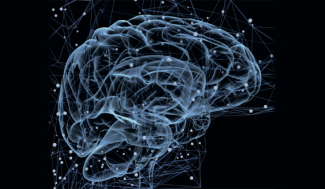Obsessive-Compulsive Disorder (OCD) is the fourth most commonly treated psychiatric disorder after phobias, addiction, and depression.
Patients with OCD experience two main categories of symptoms: obsessions and compulsions. This disorder disrupts behavior, thinking, and emotions and, in severe cases, can lead to major disabilities in patients’ daily lives or even significant social withdrawal, with obsessions preventing concentration and compulsions “occupying” patients for up to eight or nine hours a day.
Obsessions in Obsessive-Compulsive Disorder
Obsessions are repeated, involuntary thoughts, images, or impulses that occur regularly and unexpectedly, which the person with OCD cannot escape and which cause intense anxiety. They are generally associated with suffering, risk to the patient or those around him or her, or death.
Obsessions are very often based on responsibility, or even guilt, regarding the consequences of past, present, or future actions, leading to overwhelming doubts.
The most common OCD obsessions concern the following:
- Risks of contamination, accident, assault, injury suffered or inflicted on others, or loss. Patients may, for example, be obsessed with the risk of viral contamination from a door handle or another person’s hand and, in such cases, feel compelled to disinfect their hands with bleach after every contact with an object or another person.
- Risks associated with forgetfulness, such as forgetting to lock the door.
- Disorder, lack of alignment, symmetry, or regularity in things.
Compulsions in Obsessive-Compulsive Disorder
Compulsions lead to repetitive behaviors, rituals intended primarily to alleviate or even eliminate the anxiety resulting from obsessions. These are excessive, repetitive behaviors with no real justification that may be visible, such as washing hands for more than two hours a day or checking that a door is locked more than 30 times, or invisible, such as performing mental arithmetic or repeating words.
Rituals in Obsessive-Compulsive Disorder
Rituals must generally be performed in a strict order, and patients are sometimes required to repeat the ritual if it has been interrupted or if they believe they have made a mistake. For example, some patients feel compelled to check the mail in their mailbox at least 20 times, starting from the left and moving to the right. This ritual must be repeated from the beginning if the patient loses count or starts on the right.
Some rituals are directly linked to anxiety, such as washing hands after touching objects, while others have no connection with the obsession, such as counting to 50 before leaving the house, starting with the left foot.
Some patients are aware that their behavior is excessive but are unable to stop themselves and therefore hide from those around them in order to engage in it.
A majority of patients with OCD have other associated mental problems, with 75% suffering from anxiety disorders and 60% from major depressive disorder or bipolar disorder.




